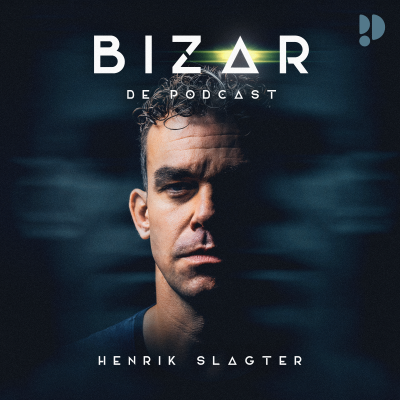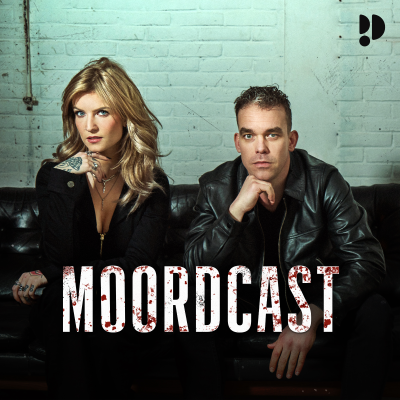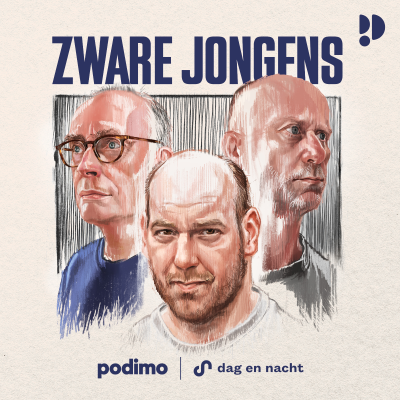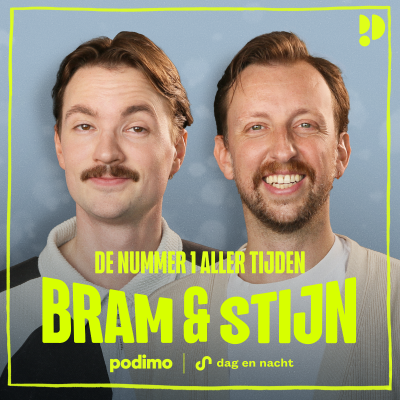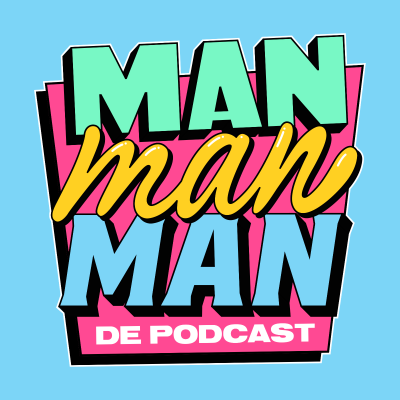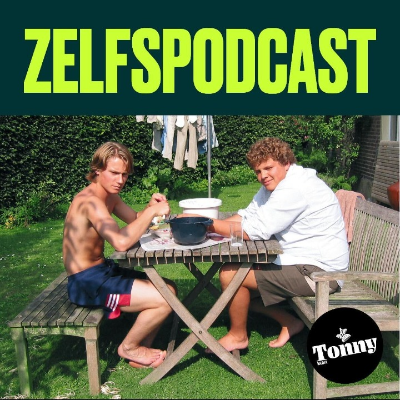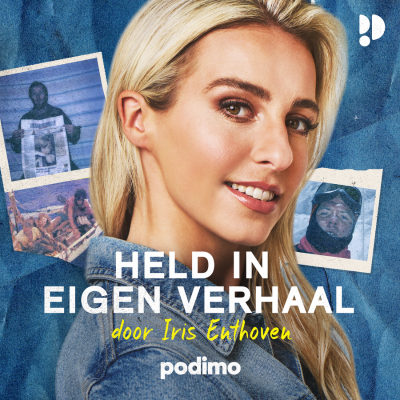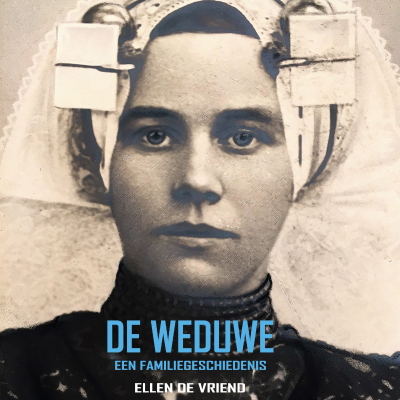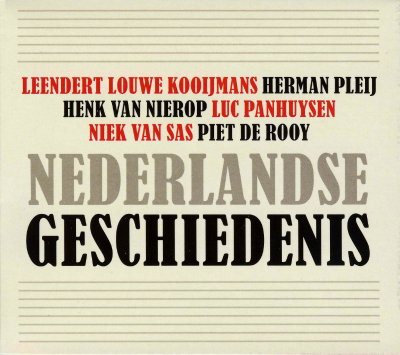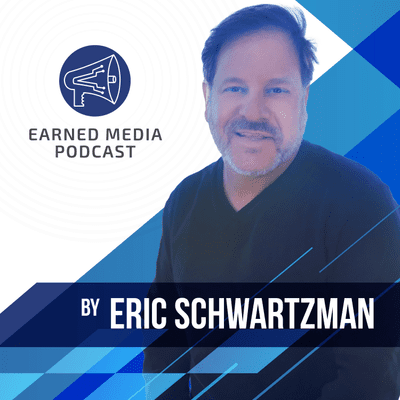
Earned Media Podcast
Podcast door Eric Schwartzman
Tijdelijke aanbieding
2 maanden voor € 1
Daarna € 9,99 / maandElk moment opzegbaar.

Meer dan 1 miljoen luisteraars
Je zult van Podimo houden en je bent niet de enige
4.7 sterren in de App Store
Over Earned Media Podcast
Experts discuss the art and science of earned influence and digital public relations.
Alle afleveringen
53 afleveringenKasim Aslam [https://kasimaslam.com/] is the CEO of Solutions 8. He is a widely recognized thought leader in the search marketing arena, due to his exceptional track record of delivering exceptional PPC results and driving business growth through innovative marketing strategies. Sol8 manages $70M a year in PPC ad spending for roughly 200 clients of all sizes, from publicly traded brands to startups. Throughout his career, Kasim has demonstrated a unique ability to understand the ever-evolving search marketing landscape and leverage his insights into the Google ecosystem to drive high-impact paid media marketing initiatives that achieve high multiple returns on ad spend. He is also the host of the Perpetual Traffic Podcast. We met at the Affiliate Meet Market in Berlin last year, where he delivered the opening keynote address. GOOGLE ADVERTISING TRENDS COVERED * Which types of products and services are easiest to sell through PPC advertising * Which product and service categories are most profitable online right now * How much it costs to hire a top Google ad agency to run your PPC campaigns * How he decides what companies to accept in his incubator program * How to create PPC ads that convert and drive qualified traffic * The role of AI in PPC advertising and the switch to Performance Max campaigns * And much, much more Contact me if you need help driving organic traffic with SEO [https://www.ericschwartzman.com/seo-consultant/]. Subscribe to the Earned Media Podcast via email [https://www.ericschwartzman.com/earned-media-podcast-subscriber/], on Spotify [https://open.spotify.com/show/3UQAxEoMU6oQE4kUYworqg], or Apple Podcasts [https://podcasts.apple.com/us/podcast/earned-media-podcast/id1508403705].
In this Affiliate Marketing Roadmap for Brands episode of the Earned Media Podcast (subscribe [https://www.ericschwartzman.com/earned-media-podcast-subscriber/]), Anna Gita, CEO of MaxWeb, which is one of the fastest-growing affiliate networks, explains what affiliate programs are and how they work. I heard Anna’s keynote at The Berlin Meet Market. She spoke about the future of the affiliate marketing industry, I was taken by her message that I immediately invited her to be a guest on the show. Content marketers [https://www.ericschwartzman.com/content-marketing-consultant/] who listened to my recent podcast with former Google Search Quality engineer Fili Wiese [https://www.ericschwartzman.com/google-search-quality-tips/], I met him there too. You can also listen to this podcast via Apple Podcasts [https://podcasts.apple.com/us/podcast/earned-media-podcast/id1508403705] or Spotify [https://open.spotify.com/show/3UQAxEoMU6oQE4kUYworqg]. The rest of this post is not so much an overview of my conversation with Anna, although it is somewhat informed by it. What follows are answers to frequently asked questions about affiliate marketing. WHAT’S THE DIFFERENCE BETWEEN AFFILIATE MARKETING AND REFERRAL MARKETING? [https://www.ericschwartzman.com/wp-content/uploads/2023/01/Affiliate-Marketing-Conference-Berlin-Anna-Gita.jpeg]Anna Gita, CEO Max Web, delivering her keynote at the Affiliate Meet Market in Berlin.While affiliate marketing and referral marketing are both performance-based marketing channels, affiliate marketers earn commissions for promoting products through tracking links, while referral marketers do not. Referral marketing is the acquisition of links from editorial content and influencers on social media. Affiliate marketers earn money in two ways. First, they earn commissions for sending traffic to an advertiser’s landing or offer page, as long as the Earnings Per Click (EPC) exceeds the Cost Per Click (CPC). Second, they earn a Payout or commission if they traffic they send converts into a sale. Affiliate commissions are typically between 5-30%. Referral marketing, on the other hand, is a type of word-of-mouth marketing that relies on digital PR, branded content, or individuals recommending a product or service to their friends and family. Much as Google Analytics defines referral traffic as the segment of traffic that arrives on a website through another source, such as a link on another domain. Referral links can be acquired through press release distribution, media releases, product sampling, and other marketing tactics. The main difference between affiliate and referral marketing is that affiliate marketing is focused on promoting products and services to earn commissions, while referral marketing is the collection of inbound links through unpaid activities. HOW DO I HIRE AN AFFILIATE MARKETER? There are four main ways advertisers tend to source and hire affiliate marketers: 1. Join an affiliate network like MaxWeb: Affiliate networks are online marketplaces that connect merchants with affiliates. You can sign up as an advertiser and search for affiliate marketers interested in promoting your products. 2. Use a recruitment agency: Some agencies specialize in recruiting affiliates for advertisers, almost like hybrid employment/talent agencies. You can work with one of these agencies to find affiliates who fit your business well. 3. Attend industry events: Industry events, such as conferences and trade shows like Affiliate Summit West in Las Vegas, Jan. 23-25, 2023, are great places to meet affiliates and build relationships with them. It is also a good idea to approach keynote speakers and podcasters who focus on affiliate marketing because they may be able to help or make suggestions. 4. Connect directly with affiliate marketers: If you know of specific affiliate marketers you think might be a good fit for your brand, create your affiliate program and contact them directly. But you need a way to generate tracking links to measure traffic and conversions from different affiliates. At a bare minimum, you’ll need a tool like Pretty Links. But before hiring affiliate marketers, thoroughly vet all your candidates to ensure they’re a good fit for your brand. Look for affiliates with a proven track record, the right audience, and good work ethics. It's also wise to establish clear terms of service and expectations to ensure everyone’s on the same page. [https://www.ericschwartzman.com/wp-content/uploads/2023/01/Affiliate-Meet-Market-in-Berlin.jpeg]Outside the Affiliate Meet Marketing at Arena Berlin at Eichenstraße 4, where MaxWeb CEO Anna Gita delivered her Affiliate Marketing Roadmap keynote address.HOW MUCH DO AFFILIATE MARKETERS CHARGE? What affiliate marketers charge varies based on experience, niche, and demand. Some affiliate marketers who are also bloggers charge a percentage of the sales they generate, while others want a flat fee or a combination of the two. Commissions for affiliate marketers range from 5-50%, depending on the terms of the affiliate agreement and what’s being sold. Since their cost of goods is higher, advertisers selling physical products usually pay less in affiliate commissions than digital products, where inventory and distribution costs are negligible. Top affiliates may also demand a fee for their services over and above their commission to cover the cost of creating original, dynamic blog posts or other expenses related to promoting the product or service. Shop around and compare rates from different affiliates to get a sense of the going rate in your industry. You can also negotiate with affiliates to see if they are willing to lower their rates or offer other incentives in exchange for a long-term partnership. IS THERE ANY AUDITED RESEARCH ON HOW MUCH GROSS REVENUE AFFILIATE MARKETING PROGRAMS GENERATE? As might be expected, the amount of gross revenue generated by affiliates varies by industry, the quality of the affiliate program, and market demand for the product or service being sold. According to a survey by the Association of National Advertisers (ANA) and Forrester Consulting, affiliate marketing accounted for roughly 10% of total US digital marketing spend in 2020. The survey also found that the average affiliate marketing program generated $20 in revenue for every $1 spent on it. Another study by the Performance Marketing Association (PMA) that was reported in Forbes found that affiliate marketing generated 16% of e-commerce sales in the US in 2020 and that affiliate marketers generated an average of $58 for every $1 invested in their programs. Rakuten recently reported [https://blog.rakutenadvertising.com/insights/2022-cyber-week-insights/] that Year-over-Year sales (2021 to 2022) on their advertiser network were the largest for the following categories: [https://www.ericschwartzman.com/wp-content/uploads/2023/01/affiliate-marketing-verticals.jpeg]Latest YoY affiliate marketing sales by vertical from Rakuten.CAN AFFILIATE MARKETERS GET SUED? Affiliate marketers can be sued in certain circumstances, and it is also possible for advertisers to be held liable for their affiliate marketers’ activities. This is one of the reasons it can be difficult for aspiring affiliate marketers to get approved to participate in affiliate marketing programs. Here are a few examples of situations where an affiliate marketer might be sued: 1. False or misleading advertising: If an affiliate marketer promotes a product or service using false or misleading claims, they could be sued by the merchant or by regulators for deceptive advertising. 2. Intellectual property infringement: If an affiliate marketer uses another company's trademarks, copyrighted materials, or other intellectual property without permission, they could be sued for copyright or trademark infringement. 3. Breach of contract: If an affiliate marketer violates the terms of their contract with a merchant, they could be sued for breach of contract. 4. Fraud: If an affiliate marketer engages in fraud, such as selling counterfeit products or making false claims about a product or service, they could be sued for fraud. In their Dotcom Disclosure Guidelines [https://www.ftc.gov/sites/default/files/attachments/press-releases/ftc-staff-revises-online-advertising-disclosure-guidelines/130312dotcomdisclosures.pdf], the US Federal Trade Commission says affiliate marketers must disclose any financial relationships with companies they publish links to. But this regulation is very loosely enforced, and many affiliate marketers and direct advertisers ignore this requirement. If you want to learn more about these requirements, I have a free, self-paced FTC Disclosure Guidelines Course [https://socialmediatraining.com/ftc-disclosure-guidelines/]. One of the main benefits of using an affiliate network like MaxWeb is managing this risk since they vet their affiliates. But suppose you don't have the protection of an affiliate network. In that case, advertisers should carefully review their terms and ensure that they are complying with all applicable laws and regulations to manage against the risk of being sued. WHAT IS THE HIGHEST-PAYING PRODUCT CATEGORY FOR AFFILIATE MARKETERS? While there are always exceptions, these product categories tend to pay higher commission rates to affiliate marketers: 1. Digital downloads: Affiliates who promote digital media products, such as video entertainment products, virtual reality experiences, ebooks, self-paced training courses, and monthly subscriptions, can often earn a high commission rate, as these products typically have higher price points and lower distribution costs. 2. Software as a service: Affiliates who promote SaaS products usually earn higher commissions since software products have high price points, cost very little to distribute, and the cost of inventory is zero. 3. Home improvement: This category took off after the lockdown, with everyone improving their home offices. Affiliates who promote home improvement products, such as fixtures, furniture, appliances, and home decor, earn high commissions, as these products tend to be expensive. 4. Luxury brands: Affiliates who promote luxury brands, such as high-end fashion, accessories, jewelry, perfumes, skincare, fine and spirits, and watches, also earn a high commission rate, as these products are expensive. To check if a luxury brand has an affiliate program, search the name of the brand plus “affiliate program,” you are likely to find a landing page where you can sign up if the brand is running an affiliate marketing program. WHICH COUNTRY HAS THE MOST AFFILIATE MARKETERS? The US is home to most affiliate marketers. Other countries where affiliate marketing is popular are the United Kingdom, Canada, Australia, and, interestingly enough, Germany. WHAT IS THE HARDEST PART OF AFFILIATE MARKETING? The hardest part of affiliate marketing is making your first sale. It’s difficult for new affiliate marketers to get their footing and start earning commissions because they don’t understand the industry, the players, or sequencing and lack experience with marketing and promotions. Seasoned SEO consultants [https://www.ericschwartzman.com/seo-consultant/] and online advertising specialists are among the best prepared to make the transition and often do to realize new revenue sources that are not reliant on providing digital marketing services to clients. [https://www.ericschwartzman.com/pivot/] Search engine optimization is one of the many ways affiliate marketers generate traffic by setting up blogs and creating branded content designed to get found when buyers are problem-solving on Google. Another challenge that affiliate marketers face is finding and promoting relevant offers to their audience. Affiliate marketers need to choose products that align with their audience’s interests, as this will increase the chances of making sales. However, finding the right products can be difficult, especially if the affiliate marketer is in a niche with a limited number of available products. Finally, competition can be a significant challenge for affiliate marketers. With so many people vying for the same audience's attention, it can be difficult to stand out and make a profit. This is especially true for new affiliate marketers, who may not have much experience or a large following. WHAT TRAFFIC SOURCES CONVERT BEST IN AFFILIATE MARKETING? It is impossible to know which traffic sources will convert best in an affiliate marketing program because it depends on the product, the price, the audience, and the strength of the offer. And these are always different. Nevertheless, the leading traffic sources affiliate marketers use to drive traffic and convert visitors into customers include (not necessarily in order of importance): 1. Content marketing and blog posts: Creating informative and engaging content on a blog or website can help attract visitors and build trust, making them more likely to purchase. Search engine optimization plays a role here as well. 2. Social media: Social media platforms can reach a large audience and target specific groups of people based on their interests and demographics. 3. Email marketing and newsletters: Email lists can be a highly targeted and effective way to promote products to a relevant audience. 4. Paid advertising: Paid advertising, such as Google AdWords or Facebook Ads, can effectively reach a specific audience and drive traffic to a website or product page. Ultimately, the traffic source that converts the best will depend on the targeted product and audience, as well as the marketing strategy's effectiveness. It may be necessary to try out multiple traffic sources and analyze the results to determine the most effective for a particular product or audience. WHAT ARE REASONABLE CONVERSION RATES FOR AFFILIATE MARKETING OFFERS? A conversion rate of 1-2% is considered to be average. Rates above 3% are above average. But rates vary depending on the product, price, audience, and offer. To calculate the conversion rate for an affiliate offer, divide the number of conversions by the number of the offer or landing page visitors, and multiply by 100. For example, if an affiliate offer generates 100 sales from 5,000 visitors, the conversion rate is 2%. WHAT ARE SOME OF THE LEADING AFFILIATE MARKETING WEBSITES? While this list is by no means comprehensive, here are a few popular affiliate marketing websites: * Amazon Associates: Amazon Associates [https://affiliate-program.amazon.com/home] is the affiliate program for Amazon, one of the largest e-commerce websites in the world. Amazon offers a wide range of products, making it a popular choice for affiliate marketers. * AWIN: Part of the Axel Springer and United Internet Groups, with Commission Factory, Awin [https://www.awin.com/] and ShareASale [https://www.shareasale.com/info/] is powered by 17 offices worldwide, over 1,200 employees, 241,000 contributing publishers, and 21,200 advertisers. * Commission Junction (CJ): CJ [https://www.cj.com/] is an affiliate marketing network that connects advertisers with publishers (affiliate marketers). CJ offers a wide range of products and services, making it a popular choice for affiliates. * ClickBank: ClickBank [https://www.clickbank.com/] is an affiliate marketing platform specializing in digital products, such as ebooks, software, and online courses. ClickBank has a large selection of products and a simple platform, making it a popular choice for affiliates. * MaxWeb: MaxWeb [https://maxweb.com/] has some of the industry's best-converting video sales letter (VSL) offers, fast response times, and friendly affiliate managers. * Rakuten Marketing: Rakuten [https://www.rakuten.com/] Marketing is an affiliate marketing network that connects advertisers with publishers (affiliate marketers). Rakuten offers a wide range of products and services, making it a popular choice for affiliates. CONCLUSION Ultimately, the right affiliate marketing website for your brand will depend on the products and services you are interested in promoting and your target audience, offers, and marketing strategy. But if you read this blog post and listen to this podcast, you will be well on your way to understanding this growing internet marketing channel which drives 16% of ecommerce conversions [https://influencermarketinghub.com/affiliate-marketing-stats/#toc-4] in the US and Canada Listen to this episode of the Earned Media Podcast with MaxWeb CEO Anna Gita for an audio Affiliate Marketing Roadmap.
If you think digital marketing for wineries is all about social media marketing [/social-media-training-bootcamp/], think again. While winery marketing for ecommerce certainly involves Facebook, Twitter, YouTube, and Pinterest, it's content marketing [https://www.ericschwartzman.com/content-marketing-consultant/], search engine optimization [/seo-consultant/], and backlinks that attract new customers and drives online conversions. Contrary to popular belief, PPC and influencer marketing are more effective than social media too. Let's face it, someone searching for wine is much more likely to be a buyer than someone perusing their social media newsfeed. When it comes to digital marketing for wineries, social media marketing is anything but failproof. In this episode of the Earned Media Podcast [https://www.ericschwartzman.com/earned-media-podcast-subscriber/], learn how a small, family-owned winery built a website that attracts more web traffic and drives more direct-to-consumer sales than even some major wineries, without spending a nickel on advertising. If you'd like to find out how my content marketing agency can help you grow revenue through SEO, click here [https://www.ericschwartzman.com/content-marketing-consultant/]. DIGITAL MARKETING FINE WINE DTC This is an audio case study with my clients Ross and Jennifer Halleck, the owners of Halleck Vineyard, who have been using my Digital Pivot Framework [/pivot/] to transition the majority of their wine sales from the more traditional retail shopping to direct to consumer ecommerce. Halleck Vineyard is an award-winning boutique luxury winery characterized by higher-priced, and higher-quality wines made in smaller batches for the upscale market. With the exception of their white wines and Rose, bottles start at $50 each. By contrast, mass market wines are lower in price and produced in larger quantities for a larger market. Mass market wines can be found in supermarkets. Luxury wines are rare. These varietals are made from specially cultivated grapes and may be aged for longer periods of time. Luxury wines also come from more specific regions. Mass market wines might be labeled simply California, while used in luxury wines can be traced back to a single vineyard in the Russian River Valley or Sonoma Coast. The place wine comes from is used to generate demand and highlight scarcity. There are hundreds of thousands of wine brands, of which fine wine is just a small fraction, competing for attention online. Using the Digital Pivot methodology I lay out in my new book [/the-digital-pivot-book/], the Halleck Vineyard website achieved massive growth, from less than 500 to more than 20,000 visitors per month. In 2022, Sonoma wine tasting [https://halleckvineyard.com/wine-tasting-sonoma-county/] room visits were up 331% over all of 2021. The Digital Pivot methodology is a sequential approach to digital marketing that prioritizes organic over paid media [https://www.ericschwartzman.com/paid-media-bootcamp-online-advertising/], social media, and earned media. [https://www.ericschwartzman.com/wp-content/uploads/2023/01/Digital-Marketing-for-Wineries-1024x834.jpg]Sebastopol Wine Tasting [https://halleckvineyard.com/wine-tasting-sonoma-county/] room sales growth at Halleck Vineyard.DIGITAL MARKETING FOR WINERIES IN SONOMA Unlike Napa Valley, Sonoma County is home to more small wineries. The Halleck's original thought was that email marketing would be the key to increasing sales. But as email slips in its ability to drive transaction for luxury brands, I was able to demonstrate how owned media marketing [/owned-media-bootcamp-digital-marketing/] is far better suited to fine wine marketing. In the wine industry, selling a brand is equivalent of telling the story behind it. Fine wine marketing requires inbound demand generation. Outbound digital channels, like email marketing, work best when the marketers present offers that appear to deliver a greater value than the cost. In the case of fine wine, or any luxury product for that matter, overly generous offers have the potential to cheapen a brand. To find out how Sonoma County Winery Halleck Vineyard [https://halleckvineyard.com/] increased their wine sales DTC online, listen to this episode of the earned media podcast. If you'd like to achieve similar results, apply here to become a delegate of the Digital Pivot Program [https://www.ericschwartzman.com/pivot/]. I'll be at the Direct to Consumer Wine Symposium [https://dtcwinesymposium.com/] later this month in Concord, California. If you need help with digital marketing for wineries, contact me [https://www.ericschwartzman.com/contact/], and let's meet up at the conference.
SEO for news websites is a critical component of reach and frequency. In this podcast, I spoke with ESPN.com [http://www.espn.com] director of SEO Louisa Frahm about best practices when it comes to SEO for headlines, how to build an effective program to support SEO for publishers, and what she’s learned about creating resources to support SEO for journalists. Louisa has a long history leading SEO for news websites. Before she joined ESPN.com, she was director of SEO at the Los Angeles Times, so she has experience in SEO for newspapers as well, so she also has experience in online newsroom best practices [/should-online-newsrooms-be-designed-for-journalists-or-everyone/]. Search engine optimization for news websites is the art and science of creating online news coverage that can be easily found through Google News and Google organic search. Given that 86% of Americans get their news online [https://www.pewresearch.org/fact-tank/2021/01/12/more-than-eight-in-ten-americans-get-news-from-digital-devices/], learning to cover the news in way that not only informs readers, but which grows audiences and drives sustainable traffic from search engines has become a crucial skill for journalists. I started doing SEO for news websites in 2002 when I founded iPressroom, which was the first online newsroom management service. I sold the company in 2011 and remain a shareholder. Today, I am a Los Angeles SEO consultant [https://www.ericschwartzman.com/seo-consultant/] helping organizations use editorial content to build mindshare, market share, and drive commerce. I also help publishers get their sites indexed by Google News, so contact me [https://www.ericschwartzman.com/contact/] if I you need help. SEO FOR NEWS WEBSITES According to Similarweb [https://www.ericschwartzman.com/competitor-analysis-similarweb/], ESPN.com is the 83rd highest-traffic website on the internet with nearly 580 million unique visitors a month who average 3.6 pages per visit and spend almost nine and a half minutes per session. Over 70% of the traffic on the ESPN.com news website is direct, and 21% of that traffic comes from organic search at 21%. After that is traffic social media at less than 4%, then email at over 3%. Interestingly enough, the top athlete names that are getting the most search results in organic traffic at ESPN.com are the tennis player Andy Murray first, followed by the combat fighter Connor McGregor, then combat fighter Patty Gimblett, and tennis player Rafael Nadal, which is curious because soccer, or baseball or basketball or football are bigger sports. Louisa explains why that is in this exclusive on SEO for News Websites. [https://www.ericschwartzman.com/wp-content/uploads/2021/04/Book-Ads_728x907.jpg] [https://www.audible.com/pd/The-Digital-Pivot-Audiobook/B092MSSPLS] SEO FOR JOURNALISTS When Louisa started working with her analysts at ESPN to help reporters execute best Google News optimization practices, their objective was to make sure that every single team and every single sport was equally prioritized within her department’s workflow. Her team leads SEO for Journalist training programs, essentially teaching writers the right formula for SEO to support SEO in journalism. Reporters can rely on her department as a resource for the appropriate amount of care and guidance. Her team is prepared to help journalists sort through the various aspects of each of the 4 types of SEO, which are on-page SEO (on-site SEO), off-page SEO (off-site SEO), technical SEO, and Local SEO At a major news publisher like ESPN, journalists don’t have to worry about the simple stuff, like providing a publication date, making sure every page is reachable from at least one static text link, or adding structured data to their article pages. That kind of technical SEO Is done for the already. Louisa and I don’t talk much about Technical SEO in this podcast. We focus mostly on news SEO. But if you’re at a smaller publication or have a blog you want to get indexed on Google News, these technical SEO details matter too. In the United States, ESPN.com dedicates a good amount of attention to the NFL, the MLB, and the NBA, since they drive a ton of traffic. College football is also huge, but combat and tennis have very dedicated fan bases. So the nice thing about SEO for news websites is that backlinks happen organically, which is how it should be. News sites don’t have to actively lure links. Since news outlets are authoritative, they become points of reference and get attributed naturally. SEO HEADLINES JOURNALISM Trending SEO Headlines in Journalism can be easily researched on Google Trends, which has a fantastic Real Time Stories [https://trends.google.com/trends/trendingsearches/realtime] view where you can see what the biggest stories are in organic search. Headlines matter a lot in SEO and Google Trends is a way to identify targets keywords. But the key is to effective SEO headlines is making sure to balance search engine needs with audience interest. You have to write for readers first, and search engines second. When it comes to SEO headlines for televised programming, people want to know the date and time something’s one, as well as the channel. But these factors can be frustrated by different time zones and programs airing on different channels in different market. In the US, their 212 syndicated Nielsen-rated markets. Based on her experience doing SEO for news publishers, Louisa says that checking the real-time articles trending in organic search is a great way to gauge what readers are interested in. She can see firsthand why headlines are important for SEO. She can see which teams and players are trends, which is a great indication of what makes a good SEO headline and what’s most likely to grab the reader's interest. She can also which types of headlines are resonating most for any given needs break. It could be a straight forward news headline, a question headline, an emotional headline, a listicle, a how to or a reason why headline. All these formats have varying degrees of efficacy for different news beats and articles. Subscribe to the Earned Media Podcast [https://www.ericschwartzman.com/earned-media-podcast-subscriber/] to hear the full interview about SEO for News Websites with ESPN.com SEO director Lousia Frahm.
Fili Wiese is a former Google Engineer and member of the search quality team. I spoke to him after his keynote at the Affiliate Meet Market in Berlin in October 2022. TECH SEO TOPICS COVERED: * Search engine optimization ecommerce marketing [https://www.ericschwartzman.com/seo-consultant/] * How to tell Googlebot what to crawl and what to ignore * How to manage your crawl budget * How to retain backlink authority * How to read Google Search Console error reports * Importance of breadcrumbs and structured data * How to get Google to trust your canonical link recommendations * And much, much more. Next up is an exclusive interview with ESPN SEO Director Louisa Frahm [https://www.linkedin.com/in/louisa-frahm-67710922/], so subscribe here [https://www.ericschwartzman.com/earned-media-podcast-subscriber/]. And don't miss the 2023 Affiliate Marketing Roadmap episode I recorded with MaxWeb CEO Anna Gita.

4.7 sterren in de App Store
Tijdelijke aanbieding
2 maanden voor € 1
Daarna € 9,99 / maandElk moment opzegbaar.
Exclusieve podcasts
Advertentievrij
Gratis podcasts
Luisterboeken
20 uur / maand

